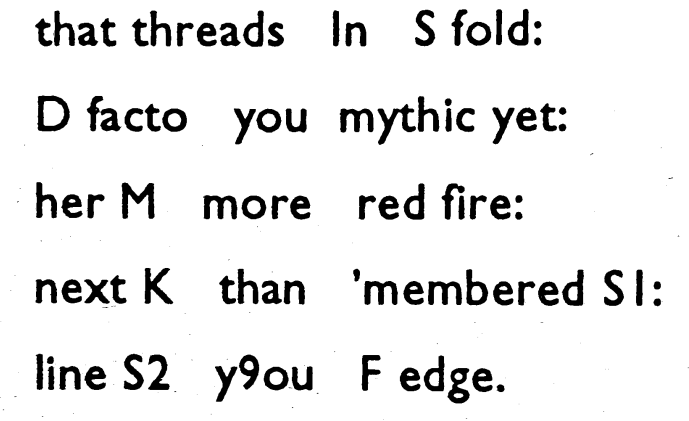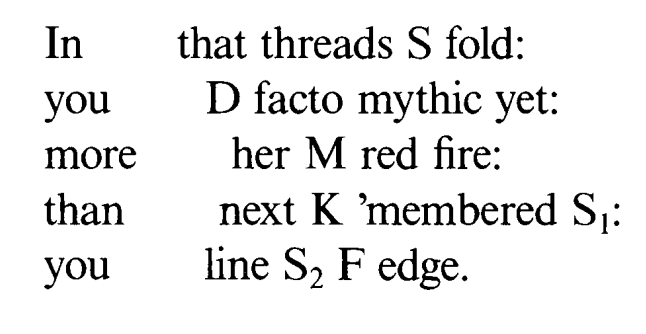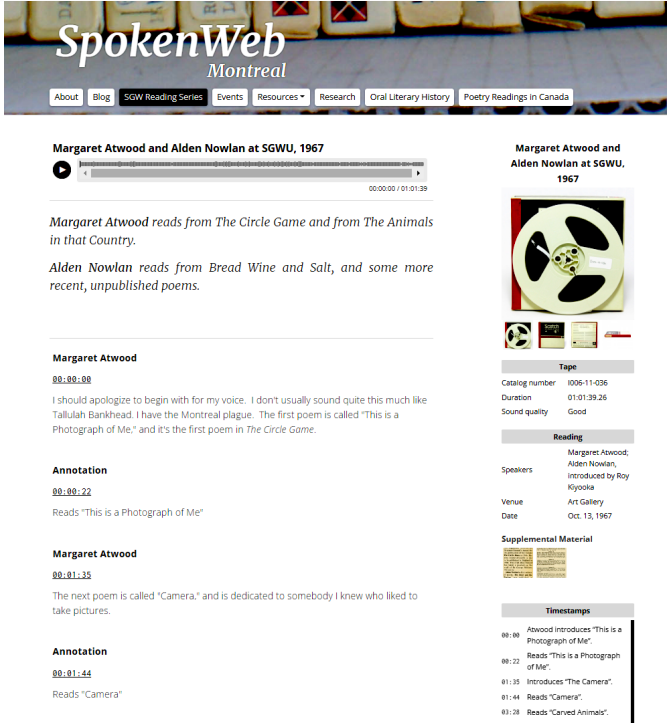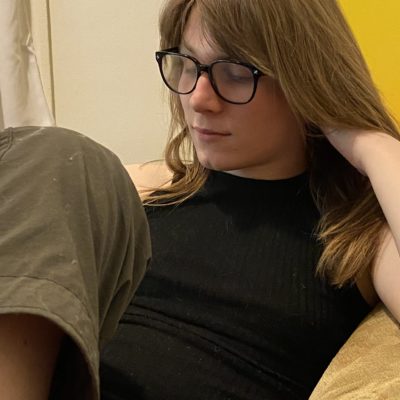
Abstract
Launched in 2005 and rebooted in 2022, the Fred Wah Digital Archive is a digital web project that intends to act as a living archive of the work of Fred Wah, including a new interview with the author. As a consequence of the poet’s interest in the sonic and phonetic aspects of language, the archive is uniquely reliant on audio archival as a means of preservation, and circulation. Highlighted in this recent interview, the relationship between audio and text records within mixed and multimedia preservation is interdependent. Audio records of an author’s performance of their own text are an opportunity to preserve not only a unique instance of a poetic performance, but to also be a reference for a poem’s otherwise ambiguous cadence and sound, similar to music’s relationship with sheet music. However, relative to text archives, audio archives necessitate an increased amount of labour in order to be made accessible. Limiting the most valuable preserved media to only an audience with the time and ability to parse long audio recordings of varying quality for those nuggets of information which they would find valuable is an obstacle not only to research, but to general public engagement with the archive. As such, the financial interests which intersect with this living archive must interrogate the degree to which the expenses of this increased labour are outweighed by its ultimately altruistic returns.
In February 2022, I was hired as a part-time research assistant with the Fred Wah Digital Archive (FWDA). The pitch the team was given was to document the community surrounding Wah’s writing in the form of a social bibliography as an additional archive feature. However, I and the rest of the team began splintering onto smaller side-projects as we all became increasingly aware that the FWDA site was missing basic functional features as a result of limited development resources. While my peers began investigating audio recordings of interviews and poetry readings, I began cataloguing the version history of Wah’s printed writing.
My interest in cataloguing version differences initially began with a desire to transcribe the poems the archive preserved in .pdf scans from out-of-print publications. However, in doing so, I discovered over a hundred poems had been edited, at times repeatedly, between publications. My curiosity surrounding this practice of repeated poetic revisions culminated in an interview with Wah in June 2022. When asked, he described the practice as inspired by John Wieners’ methodology: “Everytime you touch [your writing], you get the chance to do it again” (42:09). Of these edits, a fair few were sizable enough that they could disrupt any discussion of the work itself in favour of trying to clarify what exactly is even being talked about, such as “Limestone Lakes Utaniki,” and “Opening Up to You.” For this reason, I felt it was in the archive’s best interest to begin documenting these changes officially. However, this interview also made clear to me that my prior decision to ignore the audio archive—and indeed, the team’s approach to subdivide the archival work—was wrong. Text and audio archives do not merely compliment one another; for the FWDA, they complete each other.
One of the features that highlights this relationship between the archive’s text and audio records is Wah’s attention to cadence. This is not cadence in the sense of poetic metre, but rather “in the sense of how the language moves itself, or gets moved, into a place” (5:13). The implicit desire of language itself to dictate poetic structure rather than conform to an imposed metric schema is reflected in Wah’s almost dadaist view of syntax, which he describes as a “tyrannical thing that forces language into a particular frame” (4:11). Perhaps the clearest example of these views in practice is Wah’s “Music at the Heart of Thinking 26.1.” Fittingly, this piece is also one for which its revision history threatens to dominate the discussion surrounding it, if only for the sheer complexity of said revision.
This poem, previously titled “Artknot 32,”[1] was originally made up of two equally long columns, one left and one right (fig. 1). However, the piece was later edited to have the left column bisect the right column completely, without any changes to capitalization or punctuation (fig. 2). Consequently, the poem is fundamentally fragmented, seemingly beginning two words after it’s already started, and then repeatedly interjecting itself up until the point it stops. It’s a puzzle made even more so by the question of how exactly it came to be. When asked, Wah attributes the change to a desire to play around with language. Importantly, the potential to play around is what equally attracted him to jazz.

Figure 1. Wah, Fred. “Artknot 32.” Inside the Poem: Essays and Poems in Honour of Donald Stephens. Ed. W. H. New. Toronto: Oxford UP, 1992, pp. 287.

Figure 2. Wah, Fred. “Artknot 32.” Alley Alley Home Free. Red Deer College Press, 1992, pp. 94.
Wah has repeatedly emphasised the important influence jazz has had upon his writing. Just as musicians play in response to the ideas put forward by the other members of the ensemble, Wah, in a previous interview with Theresa Smalec, has characterised his writing as responding to “all of the constructs that language comes to [him] with” (11:20). However, this influence is not only philosophical, but sonic. Part of the process of allowing the language to dictate the cadence of the poem involves Wah working through poems “literally by ear; not just rhythmically, but sonically . . . In that sense, it’s a kind of musical attention” (6:32). On its own, this is not exceptional; rigid poetic metre also requires considering the piece within a sonic context. However, Wah’s freeform approach to cadence and even syntax highlight the equal importance of approaching Wah’s work both phonetically as well as textually; his poems do not merely benefit from being heard aloud, they rely on it.
In that sense, approaching Wah’s poetics demands the same type of attention as Raoul Hausmann’s “Dada optophonetic,” in that the written text benefits from being approached like “musical notation—a score for repeating the poem’s vocalised entailments of intonation, volume, and pitch” (McCaffery 165). Indeed, Wah has made literal use of phonetic transcription for nonlinguistic vocalisation in some of his other poems. For example, his poem [Am Osprey] concludes with the line “EEE UHREE REE.” This is meant as a phonetic transcription of the sound of an osprey’s call. In recorded performances, Wah offers the poem a rapid cadence building up to that final line, which he is able to perform suddenly and emphatically (“Poetry Reading – March 8 1979”). Heard aloud, the call is effective at punctuating the end of the piece. However, taken on its own, the transcription itself lacks that same impact. Furthermore, the absence of meaningful convention surrounding phonetic transcription of sound limits the degree to which the line is able to communicate its sonic dimension. It is effectively impossible to discern how this transcription is meant to be pronounced without either having knowingly heard the cry of osprey, or without having heard Fred Wah’s impression thereof. This analysis is not to suggest that optophonetic ambiguity within a text is a flaw. Rather, when a poem is reliant on an audience’s ability to meaningfully interpret unfamiliar phonetic transcriptions without sonic reference, then it is dependent on a form of literacy no reader can be expected to have.
It is then especially important in these instances that, if any effort is being made to preserve Fred Wah’s poetry, equal effort must be made to preserve print publications as well as recorded performances of these pieces. Such performance records are not for the sake of establishing a definitive performative interpretation any more than recordings of theatre productions establish a definitive theatrical performance. Rather, they exist as an important referential tool for communicating how the author considered the poems sonically, with regards to their tone, cadence, and vocalisation.
Indeed, while Wah’s work offers a particularly good example for the importance of poetry performance archival, there is no archive that does not solely stand to benefit from an increased attention to audio preservation. Every performance of a poem offers an important interpretation of its contents, especially in those instances where a poem can be heard being performed twice. As Peter Quartermain notes, “no two readings of a poem are ever exactly the same; sound is the least constant part of the poem, the least durable, and possibly the most elusive” (221). In that sense, poetic performance is perhaps the greatest opportunity offered to any poet to retouch their work—in the act of performing it aloud, they cannot help but redo it.
However, the current state of audio preservation makes me resentful everytime I ever have to engage with a piece of recorded media, even when I know for a fact that there is something profoundly interesting to be gained from any attempt at listening, nevermind close listening. This resentment is another reason I initially ignored the FWDA‘s audio records. I’m the kind of person who perpetually has the subtitles on when I’m watching any kind of audiovisual media. My hearing is already not great, and my audio processing for interpreting the sounds I am able to hear is worse. So the prospect of having to trudge through hour-long audio recordings without any functional closed captioning makes me want to ignore those archives regardless of the research benefits they might yield. For me, some kind of captioning for these audio records is necessary to even begin to make sense of them.
It’s a shame then that transcription is often neglected within audio work. To quote Sean Zdenek: “Typically, captioning has been treated as an add-on, afterthought, technical problem or legal requirement” (Young). This attitude is reflected in the degree to which computer-automated captioning dominates contemporary accessibility options within digital and digitised media. Although such captioning tools have made great strides in recent years towards being helpful supplements for audio media, it remains clear to anyone who has had to use them that the availability of such transcriptions alone is insufficient for considering a work to have been made accessible. These software tools continue to mix up homophones, confuse uncommon proper nouns, butcher loan words, and even ignore—or misinterpret—changes in speakers within dialogue. It’s the textual equivalent of the way AI generated images continuously fail at rendering hands. These tools do not only benefit from, but in some sense require, human supervision. However, such supervision remains the costliest part of this otherwise costless type of transcription. No human salary can compete with, for example, Amberscript’s monthly $32 fee.[2] If captioning is undervalued socially, it is also undervalued economically. It is an obligatory access, “a stoic counting down of the seconds until it is over” (Mingus), until they can stop paying for it altogether.
For its part, the FDWA did not specifically allocate any funding towards captioning the audio recordings it already contained, much less the recordings it intends to add following the website’s relaunch. According to the project’s lead researcher, Deanna Fong, the goals of the relaunch were so numerous that the need to provide captioning for both the new audio files that were to be added to the archive, as well as audio files already included and available on the FWDA website, fell through the cracks. In her words, “Funding for digital projects such as the FWDA is already highly competitive, limited-term, and precarious. Additionally, unless considerations of accessibility are ‘baked in’ to design and digital infrastructure from the outset as significant project components, it is often difficult to convince funding bodies to support them after the fact, precisely because of the time commitments and high labour cost” (Fong). The fact that even the most basic accessibility measures were able to fall through the cracks on our project speaks to the state of accessibility work within the field.
Fortunately, the FWDA remains an ongoing project at this time. Following discussions regarding the archive’s lack of accessibility features, Fong has expressed a desire to allocate funding towards accessibility in upcoming proposals and timelines for the project. These would include not only new captioning for several hundred newly acquired FDWA audio records, but also transcriptions of Wah work’s, alongside annotations regarding whatever revision history exists surrounding those pieces. However, these transcriptions present their own legal and financial complications, as Wah’s work is not yet a part of the public domain. This is relevant, as in 2015 Talonbooks released Scree, a 646-page collection of Fred Wah’s writing from 1962 to 1991, including transcripts and in some cases facsimiles of many of the aforementioned out-of-print pieces that were previously made available digitally through the archive. The publishers were concerned that the archive’s collection could divert potential buyers away from purchasing the tome that is Scree in favour of simply going to read pieces on the archive. This conflict is similar to the one SpokenWeb encountered previously while captioning their audio archives of the Sir George Williams Poetry Readings.[3]
These were a series of poetry readings largely by Post-War Canadian and American poets among others, held at Montréal’s Sir George Williams campus between 1965 and 1974. The captions provided for these archives are remarkably helpful, including timestamps that indicate what section of audio the caption is referencing (fig. 3). However, these captions are necessarily incomplete, lacking any transcriptions of the actual poems being read at these events. As transcription is not legally distinct from reproduction, these captions are supplemental by necessity, with neither the archive, nor the readings, able to stand on their own as a resource.

Figure 3.“Margaret Atwood and Alden Nowlan at SGWU, 1967.” SGW Poetry Reading Series. SpokenWeb Montréal, 16 Oct. 2014, https://montreal.spokenweb.ca/sgw-poetry-readings/. Taken as an example of SpokenWeb’s work, this audio transcript indicates the identity of speakers, in this case Margaret Atwood, and offers a timecode for the point in the recording during which she can be heard. However, her poems “This Photograph of Me,” and “Camera” are not themselves recorded here. This is especially relevant in the case of “This Photograph of Me, as the poem’s use of parentheses is not reflected in Atwood’s reading of the piece, making it all the more necessary that a transcript of the poem be sought out even by those who have no problem hearing the recording itself.
Fortunately for the archive, a compromise has been reached between the FDWA and Talonbooks. While books that are in print can only have 20 per cent of their pages scanned and uploaded to the website, the publisher will allow books that are out-of-print to be fully scanned and uploaded. However, with regard to transcription, Talonbooks has disallowed the archive from transcribing poems contained in older out of print work if that same poem is reprinted in a newer collection. Given the historic scope of Scree, this essentially means that only 20 per cent of Wah’s whole body of work can be transcribed for the benefit of those who either struggle (at best) to engage with the scans the archive is allowed to still host. Put another way: 80 per cent of the archive’s collection is walled behind hostile design because it’s been deemed unprofitable to do otherwise. Just as park benches aren’t for sleeping, the archive can’t be for reading. At best, the archive is purely a research tool. At worst, it’s reduced to nothing more than a catalogue for potential future purchases.
Regarding audio accessibility specifically, the best practices are to have easily available captions that are complete, specific, and timestamped, as well as manually reviewed and edited. Ideally, the transcript should be considered as its own entirely legitimate record, and reading through it should be as legitimate and as nuanced a form of engagement as listening to the audio being transcribed. Accessibility is not a form of charity; it’s a part of basic livability.
Works Cited
Brulé, Ana, and Fred Wah. “Interview – June 16 2022.” Fred Wah Digital Archive, circa 2022.
McCaffery, Steve. “Voice in Extremis.” Close Listening: Poetry and the Performed Word, edited by Charles Bernstein, Oxford University Press, 1998, pp. 162–177.
Mingus, Mia. “Access Intimacy: The Missing Link.” Leaving Evidence, 5 May 2011, https://leavingevidence.wordpress.com/2011/05/05/access-intimacy-the-missing-link /.
“Pricing for Our Manual and Automatic Services.” Amberscript, 15 Aug. 2022, https://www.amberscript.com/en/pricing/.
Quartermain, Peter. “Sound Reading.” Close Listening: Poetry and the Performed Word, edited by Charles Bernstein, Oxford University Press, 1998, pp. 217–230.
Smallack, Therisa, and Fred Wah. “In For Instance — Literary Arts Program,” CJSW, circa 2002. https://fredwah.ca/node/431.*
Wah, Fred. [Am Osprey]. Fred Wah, 1993. Print “Poetry Reading – 8 March 1979.” Fred Wah Digital Archive, 21 Feb. 2018. https://fredwah.ca/node/438. Scree: The Collected Earlier Poems, 1962-1991. Edited by Fred Wah and Jeff Derkson. Talon Books, 2016.
Young, Glenys. “The Science of Silence: Captioning Shares Meaning, Not Just Words.” Texas Tech Today, Texas Tech University, 2016.
Endnotes
[1] The title was changed with the release of the 2020 recompilation of Music at the Heart of Thinking. During my interview with Wah, I was not aware of this change. As such, the poem was referred to by its old title during our discussion of it. I am aware this only adds to the confusion.
[2] A person would need to be paid $0.20/h to match that cost. At its inception in 1938, the American minimum wage was set at $0.25/h.
[3] SGW Poetry Reading Series. SpokenWeb Montréal, 16 Oct. 2014, https://montreal.spokenweb.ca/sgw-poetry-readings/.
